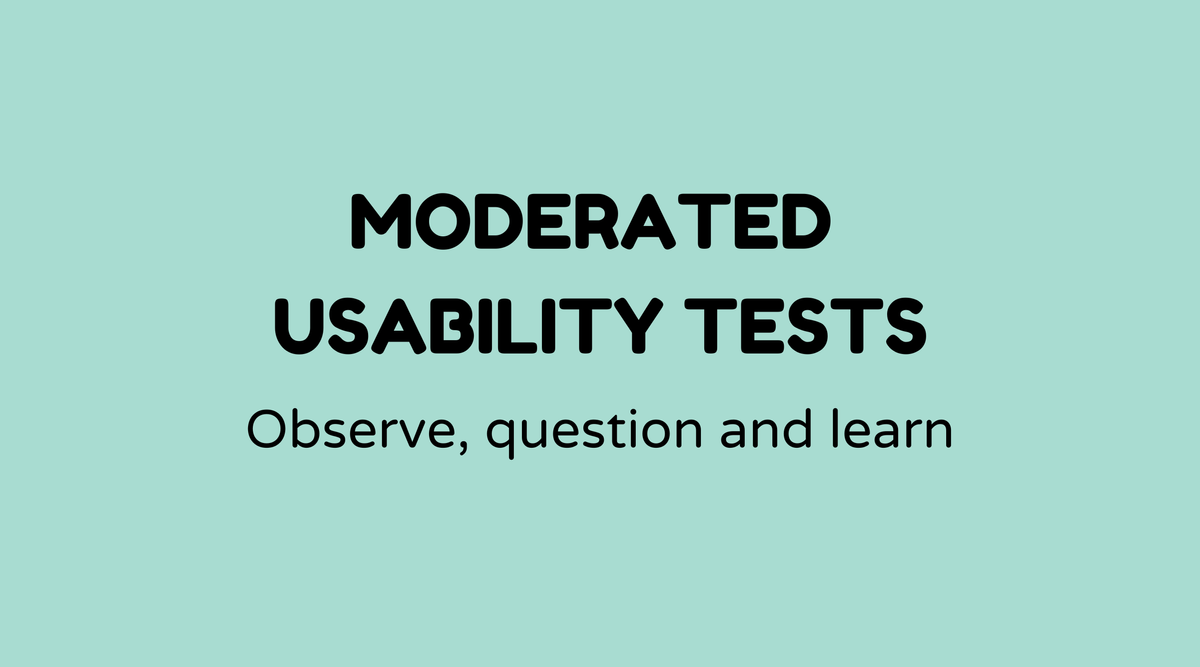Moderated Usability Testing

Overview of Moderated Usability Testing
In product development, ensuring that a product is not only functional but also user-friendly is essential. That's where moderated usability testing is essential. Before a product is launched, understanding how real users engage with it can offer valuable insights. This type of testing involves observing users as they interact with a product or prototype with the guidance of a facilitator. This process helps pinpoint usability issues early on, enabling developers to create a product that aligns with user expectations.
Why Moderated Usability Testing is important
Moderated usability testing is vital because it enables direct observation of user interaction. Stakeholders can gather insights not only on what users do but also the reasoning behind their actions. It allows the collection of qualitative data that reveals the "whys" behind user behavior, providing developers an opportunity to address challenges before the product hits the market. Furthermore, this testing can facilitate immediate feedback and lead to more user-focused iterations that can reduce the likelihood of post-launch issues.
Understanding Moderated Usability Testing
Moderated usability testing is a research method that includes a real-time observer, or moderator, who guides participants through a series of tasks while using the product. This process is interactive, often incorporating a blend of pre-set tasks and follow-up questions. Moderators can adapt the flow of the session based on user responses, which aids in gathering detailed data that may not emerge in unmoderated tests. Typically, sessions are recorded for further evaluation, and the feedback collected enhances the overall user experience.
How to Conduct Moderated Usability Testing
Initiating moderated usability testing necessitates careful planning. Here’s a simplified outline:
-
Identify Objectives: Clearly define what you want to achieve. Are you testing a new feature or the entire product?
-
Recruit Participants: Choose a sample of your target audience. Aim for diversity to collect a broad range of insights.
-
Design Tasks: Develop scenarios and tasks that mirror real user actions. Tasks should be relevant and connected to your testing goals.
-
Conduct the Testing: The moderator guides participants through tasks, asking questions to probe for deeper responses.
-
Analyze Data: Review recordings and notes to identify trends and usability concerns.
-
Report Findings and Iterate: Summarize findings in a user-centric report and use this information to refine the design.
Sample Agenda for Moderated Usability Testing
-
Introduction (10 minutes)
- Welcome participants
- Clarify the purpose and process of the session
-
Warm-up (5 minutes)
- Establish rapport with participants
- Brief discussion about participants' background related to the product
-
Core Task Execution (30–50 minutes)
- Participants perform tasks while verbalizing their thoughts
- Moderator asks probing questions
-
Debriefing (5 minutes)
- Participants share additional thoughts
- Moderator summarizes key observations
-
Conclusion (10 minutes)
- Thank participants
- Discuss any follow-up steps
Examples of Moderated Usability Testing
One example comes from a tech company developing a new mobile app interface. Through moderated usability testing, the team discovered that users faced difficulties navigating menu options. This insight prompted a redesign of the menu, leading to improved user contentment.
Another instance includes a financial institution testing an online banking feature. The moderated sessions revealed confusion regarding label terminology, prompting the institution to make modifications that enhanced clarity and usability.
FAQs
How does moderated usability testing differ from unmoderated testing?
With moderated usability testing, a facilitator is available to guide the session and engage with users. In unmoderated testing, participants complete tasks independently without real-time support.
What tools are commonly used in moderated usability testing?
Platforms like Zoom or UsabilityHub can facilitate remote moderated testing by recording sessions and providing a medium for interaction.
How many participants are usually involved in moderated usability testing?
Typically, 5 to 10 users participate – sufficient to uncover common usability challenges but manageable for in-depth analysis.
How long does a typical moderated usability testing session last?
Sessions generally last between 60 to 90 minutes, though this can vary based on the complexity of the product being tested.
Is moderated usability testing applicable to all types of products?
Yes, it's flexible and can be applied to digital products like apps and websites, as well as physical products and services.
When is the best time to conduct moderated usability testing?
It’s beneficial during the early phases of the design process, but it can be useful at any stage where user feedback is valuable.



